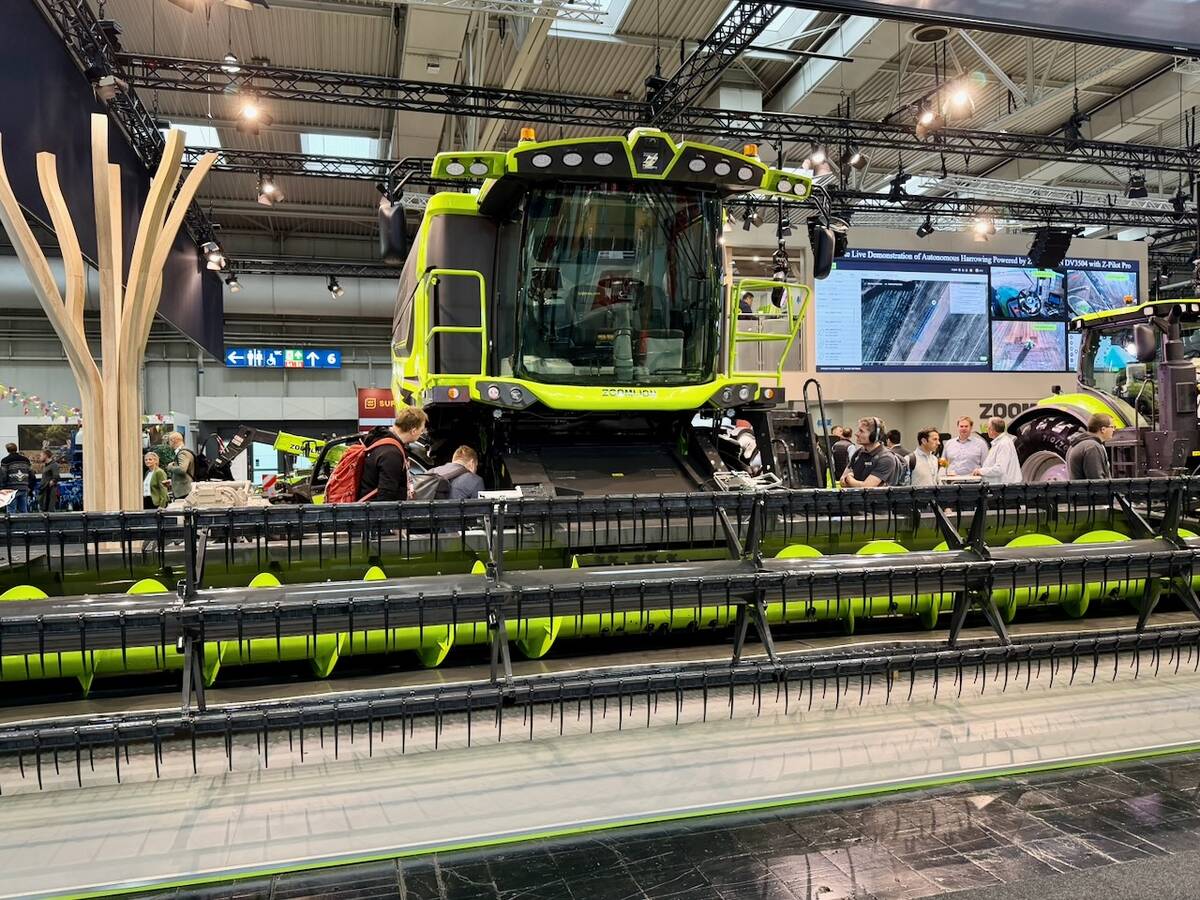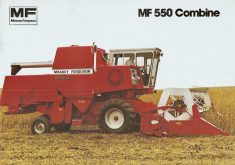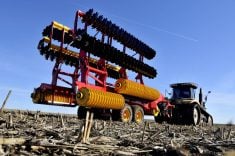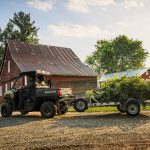A Wisconsin-made J.I. Case steam engine, first used in the early 1900s to open virgin farmland on the Canadian Prairies before settling in southern Ontario, is poised to return to the country of its origin thanks to the 80-year-old Amish man who has toiled over 20 years to restore it.
John Stutzman, a resident of the St. Marys, Ont., area for several decades, is in the process of following several other members of the now disbanded Amish community to central Michigan. The couple’s Ontario property is for sale, a home has been secured in Michigan, and Stutzman is considering options for transporting the approximately 17-tonne machine across the Sarnia/Port Huron border.
“I don’t have a choice,” he told Farmtario during a recent visit to see the machine inside his on-farm metal fabricating shop.
Read Also

Agritechnica 2025: Day 3
Zoomlion’s diesel-electric hybrid combine drives draws interest, data standards look to keep up to technology change and tractors of the year are named at German farm show Agritechnica 2025.
“I don’t have it finished. Plus I’ll need something to do over there. I’m 80 years old; I need something where, if I want to go and have a rest, I can do it.”
Both Stutzman and the steam engine have interesting stories to tell. He spent his early years in Ohio, the son of a sawmill operator.
“Having my own (metalworking) shop was my dream since about Grade 5, I guess,” says Stutzman. He remembers his teacher noticing his extracurricular manufacturing sketches and asking “Johnny, are you done your work yet?”
Coming to Norwich in 1956 and completing his education in a one-roomed school, he followed his father’s footsteps into sawing timber. He eventually married Catherine and established a business near St. Marys. He also went to work for Easy Lift Doors as a carpenter.
The original thought when he purchased the 22-foot-long steam engine in 1995, sight unseen from a collector in Alberta, was that it could eventually run his sawmill.
That never happened but it has, over the intervening nearly three decades, been transformed from a rusting hulk to a nearly-restored beauty with only a few key elements needed to return it to working order. And in the process, Stutzman has established himself in the Amish and non-Amish communities as a skilled fabricator.

In 2004, John and Catherine moved approximately one kilometre east from the sawmill location to a new home and machine shop. An auction sale took place there in late August. Many of the metalworking machines were sold but Stutzman will take a few to Michigan.
“Sometimes you’ve got to take a long way around to what you dream of,” he said. “I wasn’t ever blessed with a lot of money but I was able to meet and learn from some very skilled people along the way.”
On seven-foot diameter steel rear wheels, the 110-horsepower steam engine rolled out of J.I. Case’s Racine manufacturing facility on June 28, 1911. Sales catalogues consulted by Stutzman indicate it would have sold for $3,000 in 1913. An optional cab would have cost $55 but there was no cab when he bought it.
“The engine was likely shipped to Winnipeg by freight train with a group of five engines and was used originally for plowing,” Stutzman said. There’s also an Alberta inspector’s stamp from that time so it’s possible this engine made its way west from Winnipeg before being put to use.
For a few years, he believes, it was used to pull heavy plows that converted the Prairie grassland into cropland. But once this early work was complete, farmers moved to smaller, more cost-effective plows for working the land.
Although the need for locomotive steam engines waned, there was still work for stationery machines. After being transported to interior British Columbia, the engine took up a role of running a sawmill.
Stan Reynolds, the collector whose multitude of machines now form the famed Reynolds-Alberta Museum in Wetaskiwin, purchased the then-derelict steam engine sometime in the mid-1960s. Stutzman was provided photos of the machine at its B.C. workplace — taken before it embarked on what became a fateful journey back across the continental divide to Alberta.
The transport on which it was loaded was, Stutzman suggested, “a fairly high truck which, in my opinion, was too light.
“Unfortunately, (the driver and his helper) didn’t survive the trip. As they were going through a pass in the Rockies, they lost their brakes and both were killed.”
When the steam engine eventually arrived in Wetaskiwin, some parts were missing and others damaged. And that’s the state it was in when Stutzman arrived with a friend from Cambridge in 1995, a year after finally responding to an advertisement he had seen repeated in a steam power publication for approximately a year.
Despite the mountain pass crash and subsequent years of outdoor storage, “the boiler was OK and the boilerplate thickness was excellent. How anyone ever rescued it from a crash site in the mountains I don’t know.”
Thankfully, the voyage to Ontario was much less eventful.
“The engine was over-width, needing special permits and they couldn’t travel after dark or in fog,” Stutzman recalled. Throughout the nearly week-long trip, “every stop the truck made, a crowd gathered to see it.”
Although Stutzman used his skills to restore and replace many of the missing and damaged parts, many others involved a degree of specialization or manufacturing power that he simply couldn’t supply. One three-inch valve “was on the waiting list for about four years as it was a special order.”
An acquaintance found blueprints in the Case archives. Subsequently, much time was spent preparing patterns to send to foundries in both Canada and the U.S. to manufacture replacement parts.
But much of the work was completed and/or overseen by Stutzman himself.
“One of the many challenges was to rebuild the complete differential assembly, including custom ordering new shock absorbing springs and installing them under compression using blocking, jacks, chains, bars, etc.” he wrote in a report about the restoration that he handed to Farmtario.
That installation required “great care to prevent an accident. If any one of these high-compression springs would have popped out of its pocket, (a bystander) could have been seriously injured.”
He even oversaw the pouring of babbitt bearings, some between 30 and 40 pounds from molten form.
“Our two daughters, their husbands and our grandchildren pretty well all were involved; even the ladies came on deck to help pour the molten babbitt!”
New tenders for the machine, which carry fuel and water, were recently delivered to Stutzman after being manufactured at a Mennonite shop in Manitoba. They still need to be attached. And there are numerous other finishing touches on his list.
Stutzman says it would be impossible to list everyone — family, friends, neighbours, steam power enthusiasts — that he should thank for assistance with the project.
“There were so many that were involved, I’m afraid I’d miss someone.”
He’s equally certain, though, that there are even more people who would love to see the steam engine once its restoration is complete.
“I’ve had hundreds of people stop by to see it over the years.”















